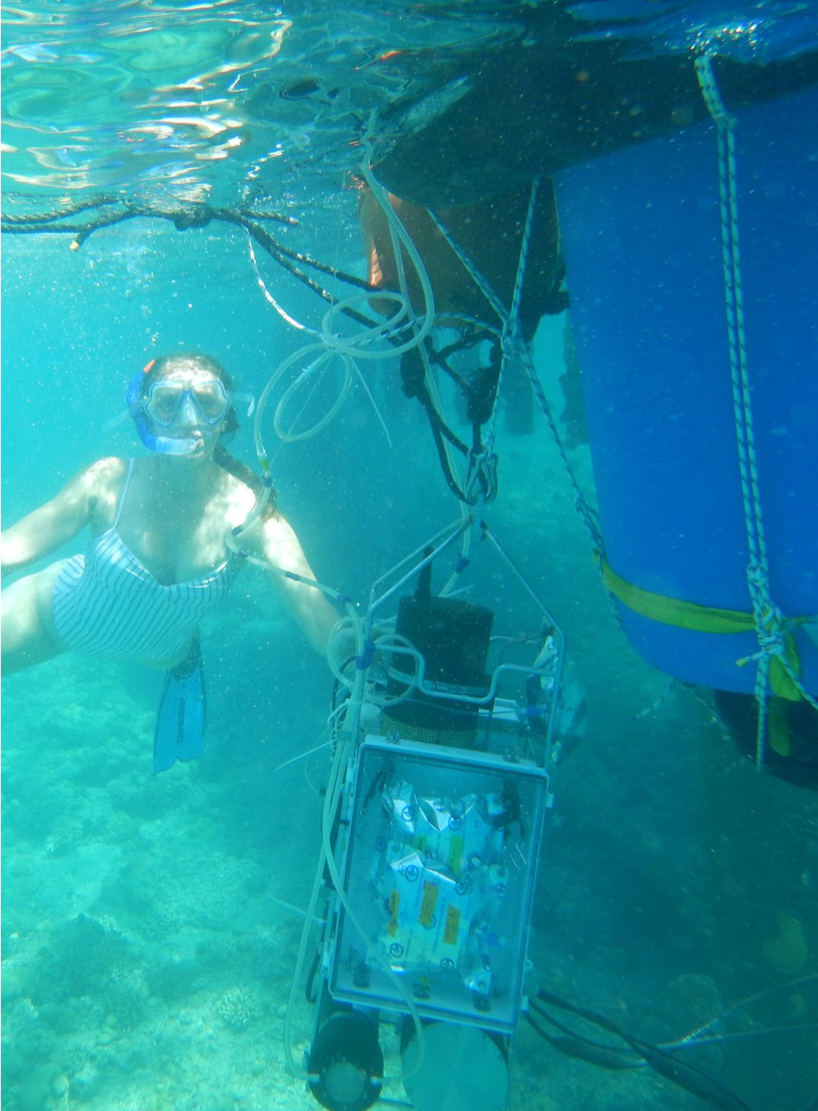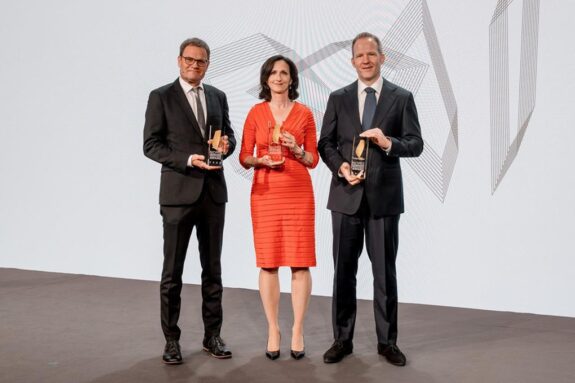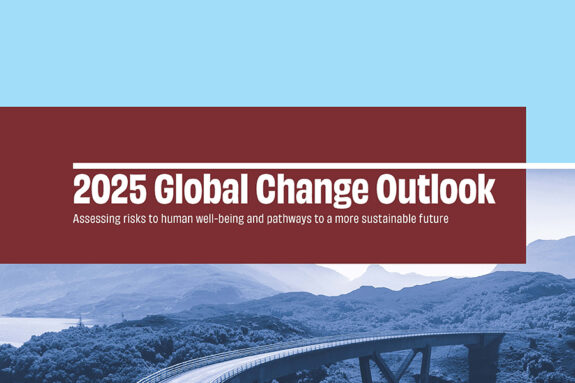Mallory Ringham uses optical sensor to assess oceans’ chemical changes
Read this at MIT Spectrum
When the Woods Hole Oceanographic Institution (WHOI) shut down due to the pandemic last spring, there was a frenzy of last-minute activity as everyone raced to gather the equipment and notebooks and hard drives they’d need to keep their science churning while working remotely.
Mallory Ringham, now a fifth-year PhD candidate in the MIT/ WHOI Joint Program in Chemical Oceanography, was among the throngs. She hoisted 20-liter glass carboys of seawater into her car and lugged them down to her basement. She also transported chemicals, an entire soldering station, and bins of supplies and spare parts. “I set up an impromptu chemical lab down there,” Ringham says. “You gotta do what you gotta do.”
It’s vital work, she says, because she’s focused on how a changing climate is impacting the ocean’s chemistry—for example, the extent to which seawater is becoming more acidic as it absorbs increasing amounts of CO2. Detailed information about such processes can help limit the harm we’re doing to ocean ecosystems.
“I do my work to be a part of the climate change solution,” Ringham says. “The better our understanding is of the here and now of climate change, the better prepared we’ll be for the future.”
Optical sensor
Perhaps the most precious piece of cargo Ringham rescued from her lab last spring was CHANOS II, a special sensor the size of a wastepaper basket. Designed by Ringham; her supervisor, Zhaoui “Aleck” Wang, an associate scientist at WHOI; and a cast of engineers, CHANOS stands for Channelized Optical Sensor, and it can measure a variety of molecules in seawater—carbon dioxide, dissolved inorganic carbon, protons, etc.
“Our approach,” says Ringham, “is to build an instrument to measure as much as we can in one go in the hopes of reducing our workload so we can focus on understanding the data.” CHANOS II operates remotely, which means “you put it in the water and walk away.”
Built from titanium, CHANOS II can withstand depths of 18,000 feet without imploding, but in the spring of 2020, it just needed to make it down the flight of stairs into Ringham’s basement. She was troubleshooting the instrument, fine-tuning its electronics to optimize performance. Her only major issues were Paddy and Hazelnut, the pet cat and dog that occasionally strayed into her makeshift laboratory. “Paddy steps on everything,” she explains, “so you just have to make sure he doesn’t step on anything important.”
Fortunately, Ringham was already quite familiar with the capabilities of CHANOS II. Before Covid-19 stopped the world in its tracks, Ringham ferried the little sensor to a couple of field sites where it had the chance to flex its optical muscles. In October 2019, she participated in a research cruise off the west coast of Florida to study deep-sea corals. These reefs can be found hundreds or thousands of feet underwater, and they’re vital habitats for numerous species. But as more and more carbon dioxide accumulates in the atmosphere, almost a third of that gas dissolves into the ocean, making seawater increasingly acidic.
The question Ringham is trying to address is, how vulnerable are coral skeletons to this ocean acidification? Or, as she put it, how big of an “ecological train wreck” is our changing world creating for the reefs?
While shallow-water corals can be studied from the surface or by scuba diving, their deep-sea cousins are harder to access and sample. That’s where CHANOS II comes in. Ringham strapped the sensor onto a remotely operated vehicle and maneuvered it along the corals at depth to measure the water’s carbon chemistry as the currents pulsed across the reef. The team also dispatched a few benthic landers—platforms caked in sensors that sit on the seafloor and monitor coral growth (among other things) for months at a time before being recovered so the data can be downloaded.
Ringham hopes the information she’s gathering will inform policy decisions, such as those that determine which regions of the ocean to protect from activities like trawling and fishing that would further disrupt the corals.
The role of particulates
A few months earlier, in summer 2019, Ringham traveled to coastal Eilat in the south of Israel to collaborate with the Interuniversity Institute for Marine Sciences. She again used CHANOS II, this time deployed off a dock in the Gulf of Aqaba, to investigate a different question.
It’s believed that most of the carbon entering the world’s oceans from dissolved CO2 gets built into shells and skeletons—a natural drawdown of the greenhouse gas. But there’s another way that carbon can be pulled out of solution. When particulates (from river deposition or dust storms, say) are suspended in water, they act as nuclei, attracting and mineralizing carbon, locking it up in solid form.
Up until now, it’s been almost impossible to quantify the significance of this process in regional and global climate models because commercial sensors struggle with bubbles or murky water—two things in ample supply in coastal waters like those off Eilat. CHANOS II worked well under these conditions, and Ringham is evaluating its findings now.
Her results on both projects will yield baseline information from places that historically have been hard to monitor. But more broadly, the work Ringham and others are doing to develop sensors like CHANOS II are helping to determine “what we need to do to tackle the atmospheric and ocean CO2 problems to make better decisions down the line,” she says.
Covid-19 certainly complicated matters. Ringham was only able to work for about a month in her basement before her samples ran out (she regained access to the lab in July). The benthic lander data from Florida was significantly delayed because collaborators weren’t allowed in their labs and ship schedules were on hold for months. And Ringham was supposed to return to Eilat this spring, “but then Israel shut its borders and the world went to hell,” she says. “It’s been a slow process.”
 So over the last year, Ringham’s busied herself with other pursuits: watercolor, pottery, even jewelry making (“when I came back from Eilat, my suitcase was half filled with pounds of sea glass,” which she’s beveled, drilled, and formed into necklaces for friends and family). She’s also served on committees implementing a range of gender equity and diversity initiatives across WHOI, work that feels especially meaningful as a woman in a field dominated by men.
So over the last year, Ringham’s busied herself with other pursuits: watercolor, pottery, even jewelry making (“when I came back from Eilat, my suitcase was half filled with pounds of sea glass,” which she’s beveled, drilled, and formed into necklaces for friends and family). She’s also served on committees implementing a range of gender equity and diversity initiatives across WHOI, work that feels especially meaningful as a woman in a field dominated by men.
As Ringham inches toward her dissertation defense, she’s eyeing the horizon beyond graduation cautiously. “We’ll see what happens in terms of hiring freezes and where the world is,” she says. She might continue her research in a public-serving scientific institution like the National Oceanic and Atmospheric Administration, NASA, or the US Geological Survey. However things pan out, Ringham intends to continue fusing her knack for developing technologies with her commitment to improving the world around her—from a perch above basement level.
Story Image: Mallory Ringham visited this Red Sea coral reef to study calcium carbonate precipitation, a process that may play a role in carbon cycling. (Photo: Mallory Ringham)



